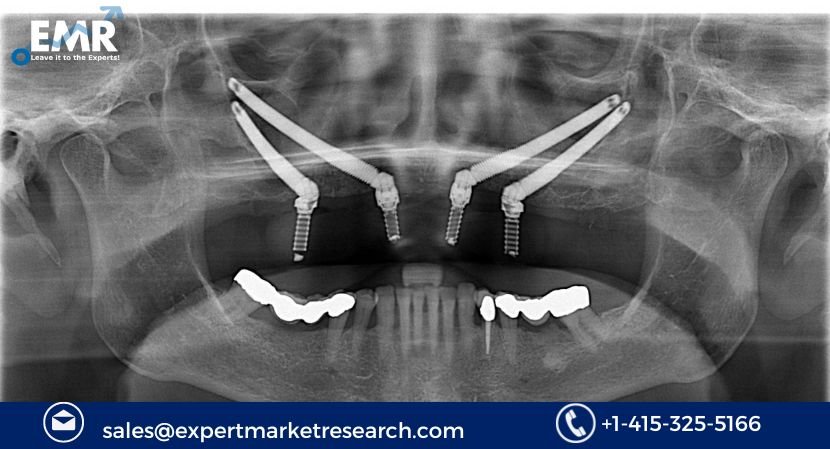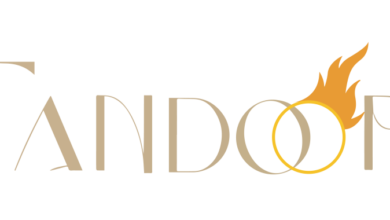Zygomatic and Pterygoid Implants Market Size, Share, Trends, Growth, Analysis, Report and Forecast 2024-2032
Zygomatic and Pterygoid Implants Market Trends, Future Outlook 2032

I. Introduction
A. Definition of Zygomatic and Pterygoid Implants Zygomatic and pterygoid implants are advanced dental implants designed to address complex cases of maxillary bone loss, where traditional implants may not be suitable. Zygomatic implants anchor into the zygomatic bone (cheekbone), while pterygoid implants anchor into the pterygoid process, both providing stable support for dental prosthetics.
B. Brief Overview of Significance in Dentistry These implants play a crucial role in restoring oral function and aesthetics for individuals with severe bone loss in the upper jaw. By providing alternative anchorage points, they offer solutions for patients who have insufficient bone volume for traditional implants, enabling them to regain their ability to chew, speak, and smile confidently.
C. Importance of Understanding Market Trends Keeping abreast of market trends in the zygomatic and pterygoid implants segment is vital for dental professionals, implant manufacturers, and investors alike. Understanding factors driving market growth, competitive dynamics, and emerging opportunities helps stakeholders make informed decisions and stay competitive in this evolving landscape.
II. Market Overview
A. Current Market Size and Valuation As of 2023, the global zygomatic and pterygoid implants market was valued at USD 332.80 million, reflecting the growing demand for advanced dental implant solutions worldwide.
B. Factors Driving Market Growth
- Increasing Incidence of Maxillary Bone Loss: The rising prevalence of conditions such as periodontal disease, trauma, and congenital anomalies contributes to the growing need for zygomatic and pterygoid implants.
- Advancements in Implant Technology: Ongoing research and development efforts have led to innovations in implant materials, design, and surgical techniques, enhancing the success rates and efficacy of these implants.
- Growing Awareness and Acceptance: Greater awareness among both patients and dental professionals about the benefits of dental implants has fueled the demand for zygomatic and pterygoid implants as viable treatment options.
C. Forecasted Market Size and Growth The market is projected to grow at a compound annual growth rate (CAGR) of 5.9% during the forecast period from 2024 to 2032, reaching a value of USD 558.45 million by 2032. This steady growth trajectory reflects the sustained demand for advanced dental implant solutions globally.
Read Full Report with Table of Contents – https://www.expertmarketresearch.com/reports/zygomatic-and-pterygoid-implants-market
III. Competitive Landscape
A. Leading Companies in the Market
- Straumann Holding AG a. Overview of Products and Services: Straumann offers a comprehensive range of dental implant solutions, including zygomatic and pterygoid implants, known for their quality and reliability. b. Market Share and Positioning: With a strong presence in key markets worldwide, Straumann holds a significant market share in the zygomatic and pterygoid implants segment.
- Noris Medical a. Products and Services Offered: Noris Medical specializes in innovative implant systems, providing a range of options for complex cases, including zygomatic and pterygoid implants. b. Competitive Advantages: The company’s focus on research and development, coupled with its commitment to quality and customer satisfaction, positions it as a key player in the market.
- S.I.N. Implant System a. Areas of Specialization: S.I.N. Implant System is known for its expertise in developing advanced implant solutions tailored to meet the specific needs of dental professionals and patients. b. Market Strategies: The company employs strategic marketing initiatives and collaboration with dental professionals to expand its market reach and enhance product offerings.
- Southern Implants a. Unique Selling Points: Southern Implants differentiates itself through its focus on precision engineering and patient-centric design, delivering implants that prioritize long-term stability and aesthetics. b. Geographic Presence and Market Penetration: The company has established a strong presence in key geographic regions, leveraging its distribution networks to reach dental practices and clinics worldwide.
B. Competitive Dynamics and Strategies
- Product Innovation and Differentiation: Companies invest in research and development to introduce innovative implant designs, materials, and surgical techniques, setting themselves apart from competitors.
- Strategic Partnerships and Alliances: Collaborations with dental associations, research institutions, and key opinion leaders facilitate knowledge exchange and market expansion opportunities.
- Marketing and Promotional Activities: Effective marketing campaigns and educational initiatives help raise awareness about the benefits of zygomatic and pterygoid implants among both dental professionals and patients.
Get a Free Sample Report with Table of Contents – – https://www.expertmarketresearch.com/reports/zygomatic-and-pterygoid-implants-market/requestsample
IV. Market Segmentation
A. By Product Type
- Zygomatic Implants: These implants anchor into the zygomatic bone and are used to support dental prosthetics in cases where there is inadequate bone volume in the maxilla.
- Pterygoid Implants: Pterygoid implants anchor into the pterygoid process, providing an alternative anchorage point for dental prosthetics in complex maxillary bone loss cases.
B. By End-User
- Hospitals: Hospitals are key end-users of zygomatic and pterygoid implants, where complex dental implant procedures are often performed by oral and maxillofacial surgeons.
- Dental Clinics: Dental clinics, including specialized implant centers, play a crucial role in providing implant-based solutions to patients with various dental needs.
- Ambulatory Surgical Centers: Ambulatory surgical centers offer outpatient surgical services, including dental implant procedures, providing convenience and accessibility to patients.
C. By Region
- North America: The North American market for zygomatic and pterygoid implants is characterized by high adoption rates, driven by advanced healthcare infrastructure and increasing patient demand for dental implant solutions.
- Europe: Europe represents another significant market for these implants, with countries such as Germany, the UK, and Italy leading in terms of market size and technological advancements.
- Asia Pacific: The Asia Pacific region is witnessing rapid growth in the demand for dental implants, fueled by improving healthcare access, rising disposable incomes, and increasing awareness about oral health.
- Latin America: Latin American countries are experiencing a growing prevalence of dental conditions, driving the demand for advanced implant solutions to address complex cases of maxillary bone loss.
- Middle East & Africa: Although still emerging, the Middle East and Africa present opportunities for market growth, supported by investments in healthcare infrastructure and rising healthcare expenditure.
V. Key Market Trends
A. Technological Advancements: Ongoing advancements in implant materials, design, and surgical techniques enhance the efficacy and success rates of zygomatic and pterygoid implants, improving patient outcomes.
B. Adoption of Digital Dentistry Solutions: Digital technologies, such as computer-aided design/computer-aided manufacturing (CAD/CAM) and 3D imaging, streamline implant planning and placement, contributing to more precise and predictable treatment outcomes.
C. Minimally Invasive Procedures: The shift towards minimally invasive implant procedures reduces patient discomfort, shortens recovery times, and expands the pool of eligible candidates for implant therapy.
D. Outpatient Dental Surgeries: Increasing emphasis on outpatient dental surgeries, facilitated by advancements in anesthesia and surgical techniques, offers patients greater convenience and reduces healthcare costs.
E. Patient-Centric Care: Growing recognition of the importance of patient-centric care drives the development of personalized treatment approaches tailored to individual patient needs and preferences.
VI. Challenges and Opportunities
A. Regulatory Hurdles and Compliance Requirements: Compliance with regulatory standards and obtaining necessary approvals for new implant technologies pose challenges for manufacturers, requiring significant investments in regulatory affairs and quality assurance.
B. High Cost Associated with Implant Procedures: The high cost of zygomatic and pterygoid implant procedures may limit access for some patients, highlighting the need for innovative financing options and reimbursement policies to improve affordability.
C. Limited Reimbursement Policies: In some regions, limited insurance coverage and reimbursement for dental implant procedures restrict patient access and adoption rates, creating opportunities for advocacy efforts and policy reforms.
D. Opportunities in Emerging Markets: Emerging markets with growing healthcare infrastructure and unmet dental care needs present opportunities for market expansion and penetration, provided companies adapt their strategies to local contexts and preferences.
E. Expansion into Adjacent Markets: Companies can explore opportunities to expand into adjacent markets, such as craniofacial reconstruction and temporomandibular joint (TMJ) disorders, leveraging their expertise and capabilities in implant technology.
VII. Future Outlook
A. Projected Market Trends and Developments: The zygomatic and pterygoid implants market is expected to witness continued growth driven by technological innovations, demographic trends, and increasing demand for implant-based solutions for complex dental cases.
B. Potential Disruptors and Game-Changers: Emerging technologies, such as tissue engineering and regenerative medicine, hold promise for revolutionizing dental implantology, offering potential alternatives or complements to traditional implant solutions.
C. Strategies for Sustained Growth: To sustain growth and competitive advantage, companies should focus on innovation, strategic partnerships, market diversification, and customer-centric approaches to meet evolving patient and market needs.
Media Contact:
Company Name: Claight Corporation
Contact Person: Jhon Roy, Business Consultant
Email: sales@expertmarketresearch.com
Toll Free Number: US +1-415-325-5166 | UK +44-702-402-5790
Address: 30 North Gould Street, Sheridan, WY 82801, USA
Website: www.expertmarketresearch.com



